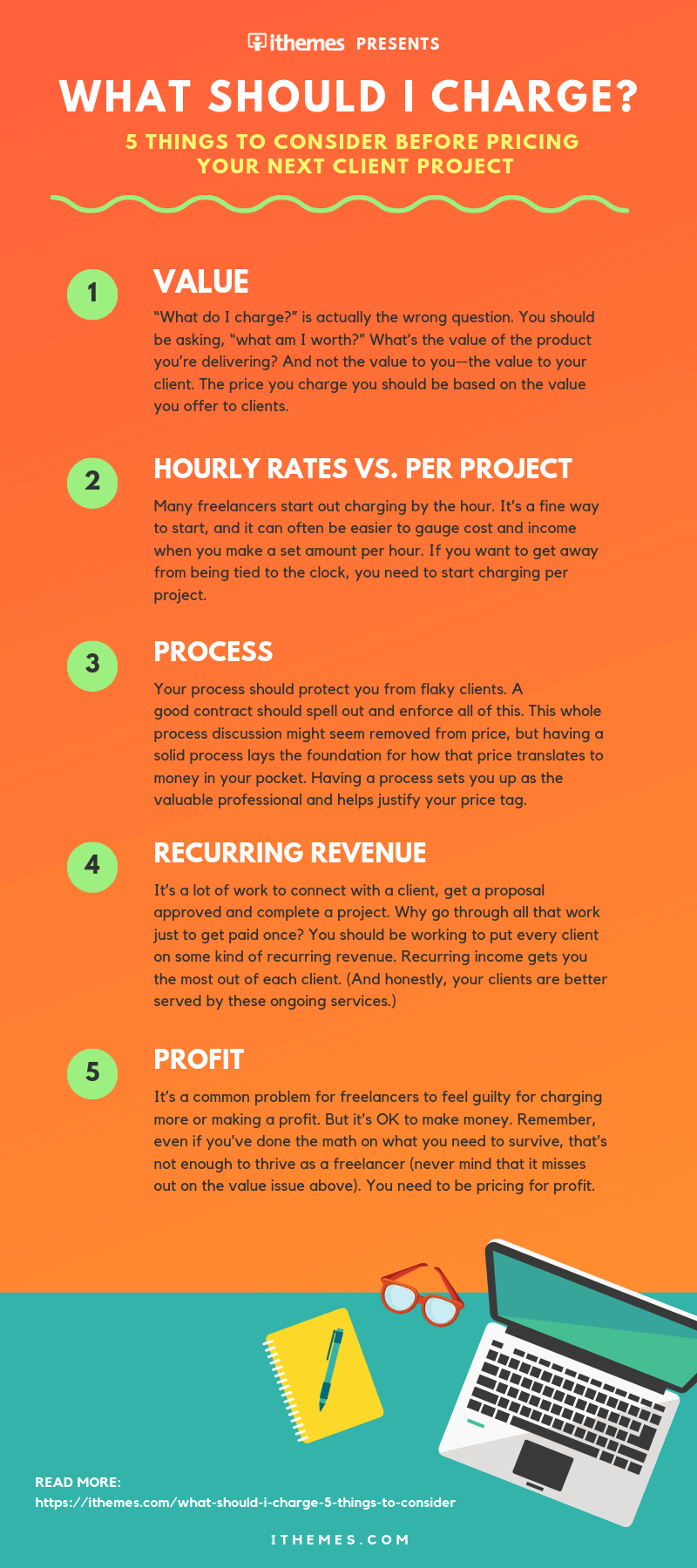What Should I Charge? 5 Things to Consider Before Pricing Your Next Client Project
Pricing is a big issue for freelancers. The question “what should I charge?” has stopped more freelancers in their tracks as they struggle to get started. What Should I Charge? It is an important question, but it doesn’t need to be debilitating. Let’s explore five big picture ideas about freelance pricing that can help you put it all into perspective.
Pricing is a big issue for freelancers. The question “what should I charge?” has stopped more freelancers in their tracks as they struggle to get started.

What Should I Charge?
It is an important question, but it doesn’t need to be debilitating. Let’s explore five big picture ideas about freelance pricing that can help you put it all into perspective.1. Value
“What do I charge?” is actually the wrong question. [pullquote]You should be asking “what am I worth?” What’s the value of the product you’re delivering? And not the value to you—the value to your client. [/pullquote]Fixing their website may be an hour of your time, but if it brings in $50,000 for the client, that’s worth a lot more than $100. The price you charge you should be based on the value you offer to clients.2. Hourly Rates vs. Per Project
Many freelancers start out charging by the hour. It’s a fine way to start, and it can often be easier to gauge cost and income when you make a set amount per hour. But charging by the hour comes with two big downsides:- You can only work so many hours per day, so there’s a limit to how much money you can make.
- There’s no incentive to work faster or more efficiently.
3. Process
Pitch a process that protects you from flaky clients:- No work should start until you get paid a portion of the project (usually half).
- A site shouldn’t go live until you’ve been paid in full.
- Protect yourself from scope creep: Stipulate how many changes and edits you’re willing to make. There should be a point when additional changes cost the client more.
- What happens when clients take three months to deliver content? You should have clear guidelines about timelines and penalties when projects go dormant.
4. Recurring Revenue
It’s a lot of work to connect with a client, get a proposal approved, and complete a project. [pullquote]Why go through all that work just to get paid once? You should be working to put every client on some kind of recurring revenue.[/pullquote] Maybe you sell web hosting, ongoing website maintenance services or on-call support (or all three). Whatever it is, recurring income gets you the most out of each client. (And honestly, your clients are better served by these ongoing services.)5. Price for Profit
The truth is you probably need to raise your prices. A common problem for freelancers is that they’re simply not charging enough. It might be a crisis of confidence or a value issue that needs to be learned, but whatever it is, you need to charge more. Remember, even if you’ve done the math on what you need to survive, that’s not enough to thrive as a freelancer (never mind that it misses out on the value issue above). [pullquote]You need to be pricing for profit.[/pullquote] Even if you’re outsourcing something and have a fixed cost, you should be making a profit on it. It’s a common problem for freelancers to feel guilty for charging more or making a profit. But it’s OK to make money. One of the dangers of not charging enough is that you’ll slip into feeling resentment. That’s not a good place to be—it can undermine your business.Get the Infographic

Sign up now — Get SolidWP updates and valuable content straight to your inbox
Sign up
Placeholder text
Placeholder text
Get started with confidence — risk free, guaranteed
